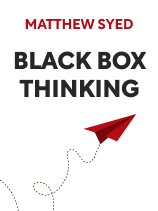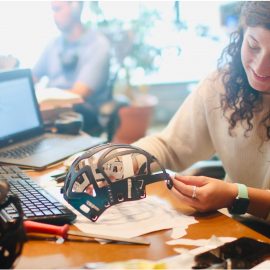

This article is an excerpt from the Shortform book guide to "Black Box Thinking" by Matthew Syed. Shortform has the world's best summaries and analyses of books you should be reading.
Like this article? Sign up for a free trial here .
What is bottom-up learning? How does bottom-up learning breed success?
Bottom-up learning is taking small steps with limited knowledge, making mistakes, and adjusting. On the other hand, a top-down approach to learning is when a small group of elites builds theories to capture the truth about something.
Read more to understand why a bottom-up learning approach advances human society.
What Is Bottom-Up Learning?
Syed asserts that by contrast, learning from failure is a bottom-up approach: You take small steps with limited knowledge (as opposed to grand, top-down action), inevitably make mistakes, and adjust accordingly. For example, market economies feature many agents that work bottom-up to build businesses. This allows the economy to grow organically: Each business steps toward success makes mistakes and adjusts until the best succeed and others fall away.
The key to bottom-up learning is testing. Each time you take action, test whether your knowledge fits the situation or not. For example, a smart business owner validates product ideas through testing—introducing her ideas to potential customers and noting how they respond.
By testing, you learn what won’t work and can adjust accordingly. For example, maybe that business owner found that her product would enter a saturated market with established alternatives. By testing, she’s avoided potential failure and can adjust her strategy according to what she learned.
In other words, bottom-up learning allows for swift adaptation, according to Syed. You fail fast and often, building practical knowledge through real-world experience.
| Undertake a Practical Apprenticeship In Mastery, Robert Greene explains that top-down education (conventional schooling) doesn’t prepare us for the real world because it doesn’t give us practical, real-world experience. To overcome this, he suggests you seek out an apprenticeship: An intense effort to explore your field of interest, develop essential skills, and gain practical knowledge. Like Syed, he advocates for an open, experimental mindset. By taking one step at a time into the unknowns of your field, you’ll make small mistakes that you can learn from. Aim to adapt your learning experience to: Your own interests: Like Charles Darwin exploring the natural world of South America and the Galapagos, step fully into your interests and learn through constant engagement with the ideas and questions that challenge you. Your field’s established skills: Just like naturalists established methods for observing, collecting, and analyzing specimens, your field has conventional ways of operating. Learn these through trial-and-error to build practical competence. The social reality of your field: Greene suggests learning how people think and where the power lies, so that you can avoid developing negative work relationships that distract you from your true focus. It’s essential to directly engage with these realities because attempting to understand them via top-down theorizing will never yield an accurate picture. Instead, take advantage of being a beginner: When you’re new, people will understand that you need to make mistakes to adapt to your field. |
Practice Influences Theory
Building on the importance of testing in bottom-up learning, Syed argues that our standard view of progress—that scientific theories enable technological innovation—is backward. Instead, Syed suggests that trial and error experimentation leads to practical know-how, which in turn influences theory.
For example, Thomas Edison developed a method of recording sound by experimenting with telegraph technology. Though he lacked precise theoretical knowledge of the invention beforehand, he reached a working phonograph through trial and error.
In the end, Syed argues that theory and practice reciprocally drive change in a complex interplay of influence. In other words, top-down and bottom-up approaches complement one another, though he doesn’t explain how.
(Shortform note: In Mastery, Robert Greene asserts that chance plays a crucial role in scientific discoveries, and he suggests priming your life for such serendipity: Our brains naturally seek out connections between ideas, and we can amplify this effect by surrendering control. When we’re focused, he argues, our attention narrows and reduces the range of ideas we’re engaged with. To counteract this, take two steps: First, widen your information intake to include sources you don’t normally use. This can stimulate new connections. Second, take plenty of time to rest, relax, and engage in casual activities, like sport or music. This keeps your mind flexible and open to new ideas.)

———End of Preview———
Like what you just read? Read the rest of the world's best book summary and analysis of Matthew Syed's "Black Box Thinking" at Shortform .
Here's what you'll find in our full Black Box Thinking summary :
- How an organization’s culture and systems either promote or prevent learning
- The steps for learning from failure in our complex world
- How to shift mindsets around failure to promote a learning-oriented institution






